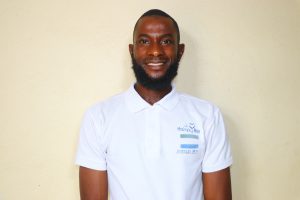At the Daries Salaam COG Primary School, 329 students and five staff members struggle to access sufficient water.
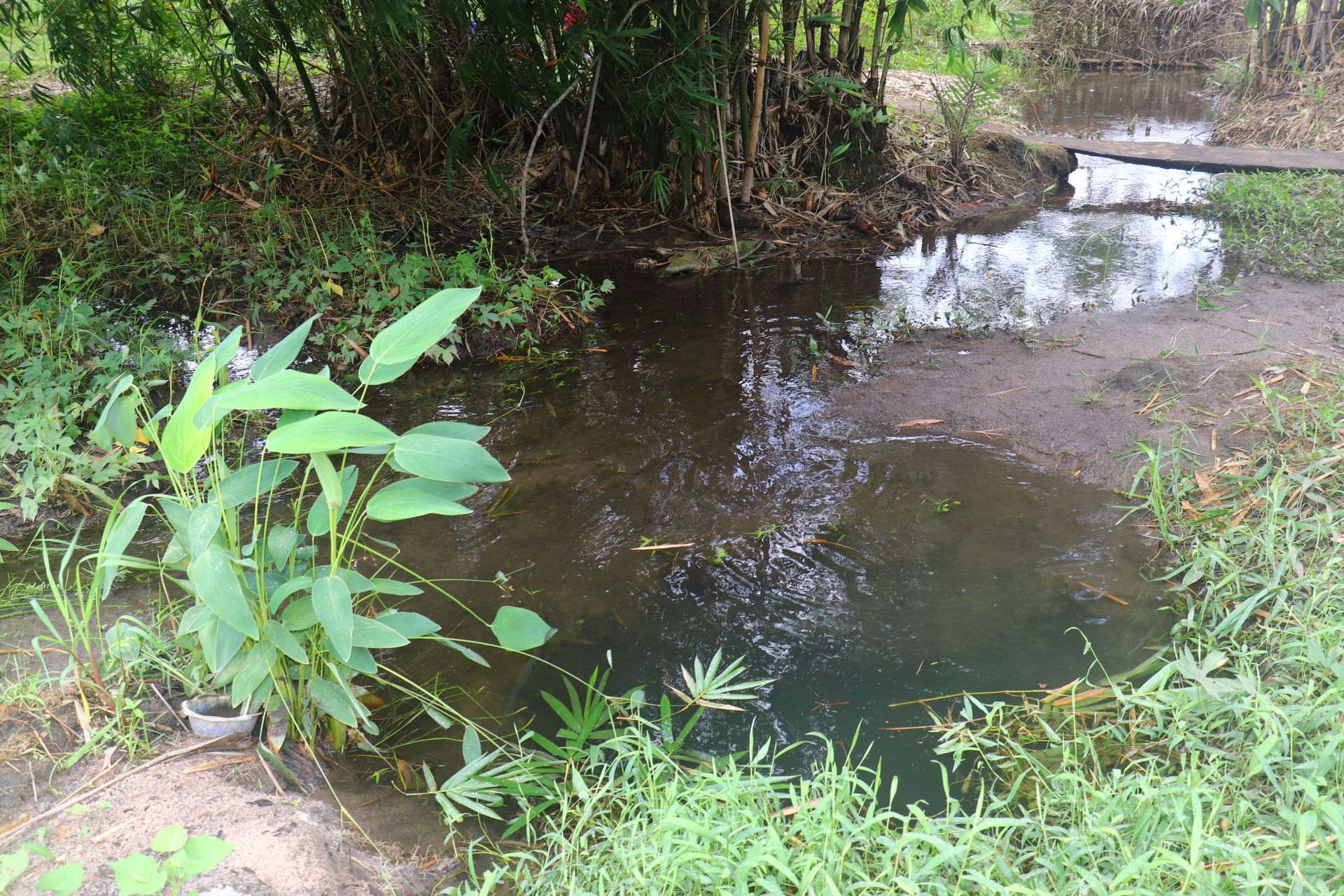
The swamp children drink from.
Field Officer Alie Kamara explained the difficult reality of the school’s unreliable water supply and the dangers students face in their daily search for water.
"The primary water source is seasonal and breaks down frequently. The alternative water source is located far from the school, which is the swamp water. The pupils were walking long distances for water. This might hurt their legs and heads after walking long distances and carrying water on their head. Another negative consequence of the swamp water is [that] the pupils are prone to snake bites. The road led to the source has a footpath, and there are stumps. The pupil gets stuck, also during the rainy season, the road gets slippery."

A teacher and students head to the swamp to fill their buckets.
He went on to paint an even clearer picture of the unsanitary conditions surrounding the only other available option.
"The scoop hole or surface water located [is] in a swampy area. And it is underneath cane sticks. It is surrounded by natural vegetation. The surrounding area is not clean, and leaflets fall all over the surroundings. Sometimes, the water users cross a board along the scoop hole [and] stand on [it] to fetch water. There are leaflets in the water as well as sludge. Also, green pigment settles on the water or on the side," Alie continued.
The students here receive an education in hardship, frustration, and water-related illnesses.
13-year-old Gbassay spends two hours a day hunting for water.
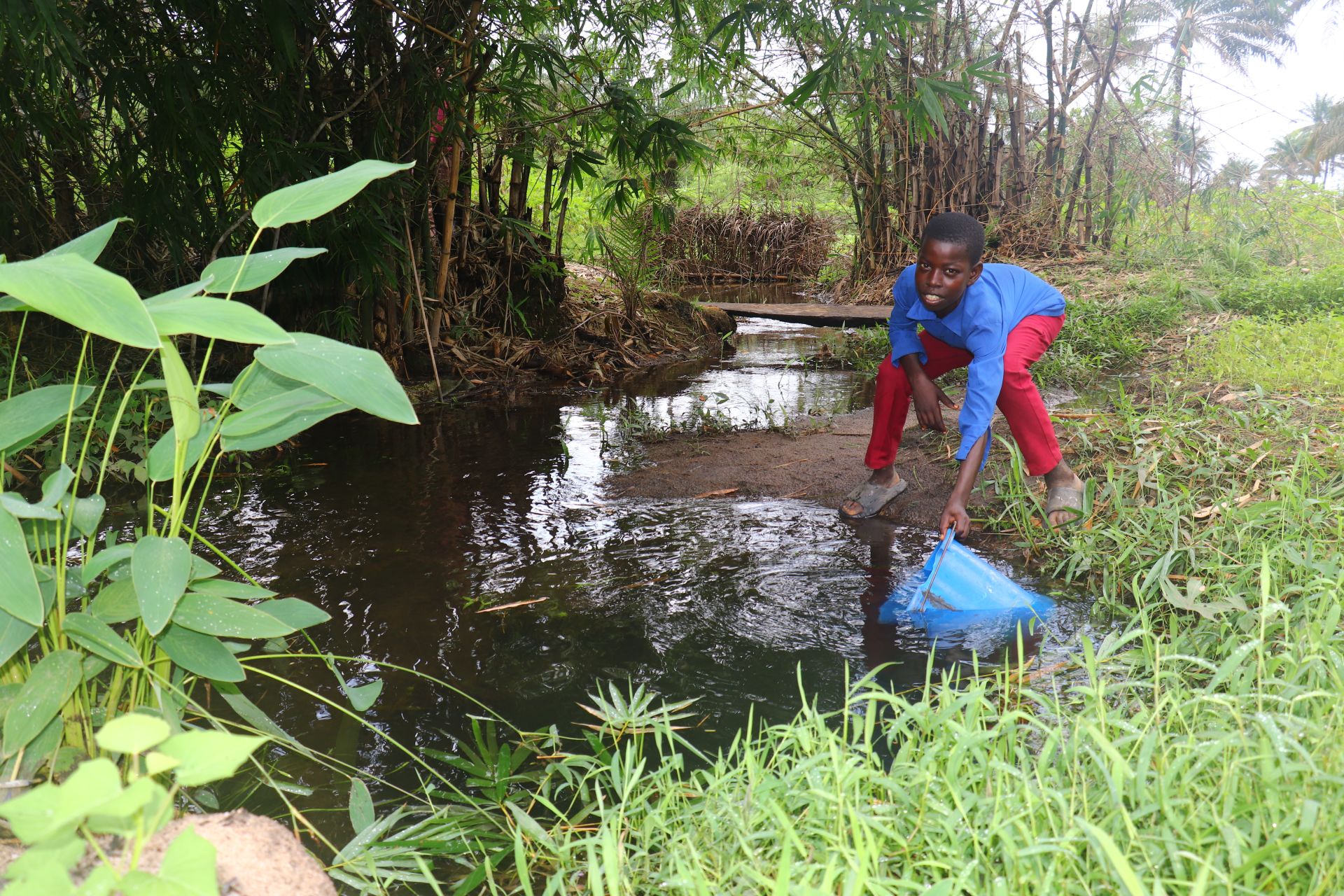
Gbassay collects drinking water from the swamp.
"The water well at school sometimes breaks down [and] also gets dry. And when this happens, I will go to the swamp to fetch water. The distance is very far and I will not return quickly. Sometimes the swamp water gets dry after many people [have] already fetched water there. I must wait for minutes for the water to [be] clean before I can fetch water. All these cause me [to] delay fetching water," he shared.
For Gbassay, these delays quickly build into overwhelming barriers to his learning and dreams.
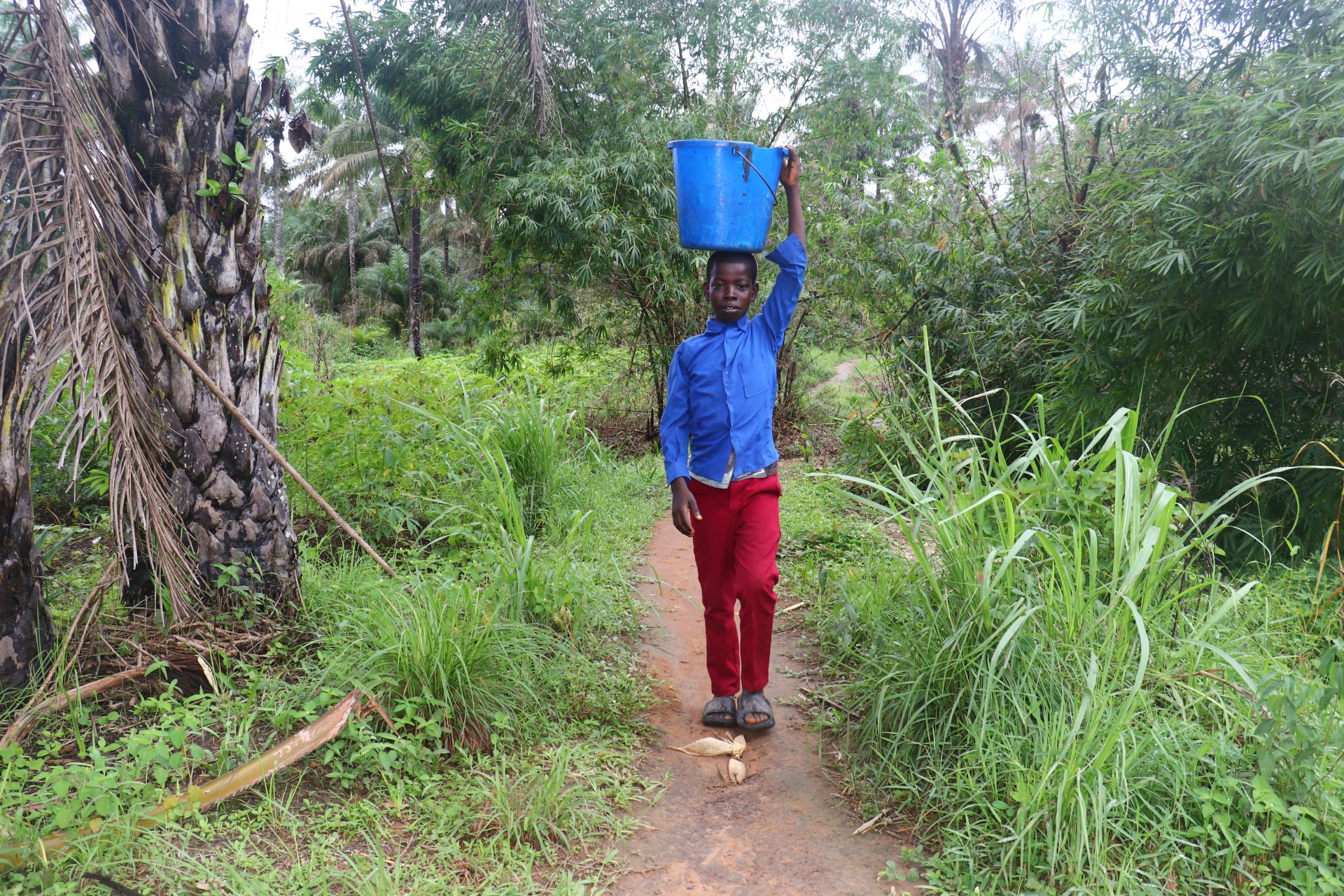
Gbassay.
"My life becomes so hard for me due to [the] water problem at school. I will not be able to complete lessons, and it is hard for me to study. Walking long distances to access the swamp water is a burden on me, and I am not okay with that. After making [a] single trip a day, I get tired or even get soaked with all my uniform. I must remove my uniform, allow it to dry, and I always [feel] discouraged about that. This prevents [me] at the moment to join the class while in session."
His frustration deepened as he reflected on the daily struggle of fetching water in unsafe and exhausting conditions.
"I feel bad when I am sent to fetch water. The water well at school is not producing enough water, and it breaks down frequently. This causes me to walk long distances to access the swamp water. The road leading to the swamp is not good to walk on, and in the rainy season, the road gets slippery. And sometimes I get stuck. Also, carrying a rubber bucket and walking long distances is not an easy task for me. I get tired after making a single trip, and this causes me not to be in school all day. I go home early because of the water problem at school," he lamented.
Yet, despite these daily struggles, Gbassay still holds on to his aspirations, fueled by the hope of better access to water.
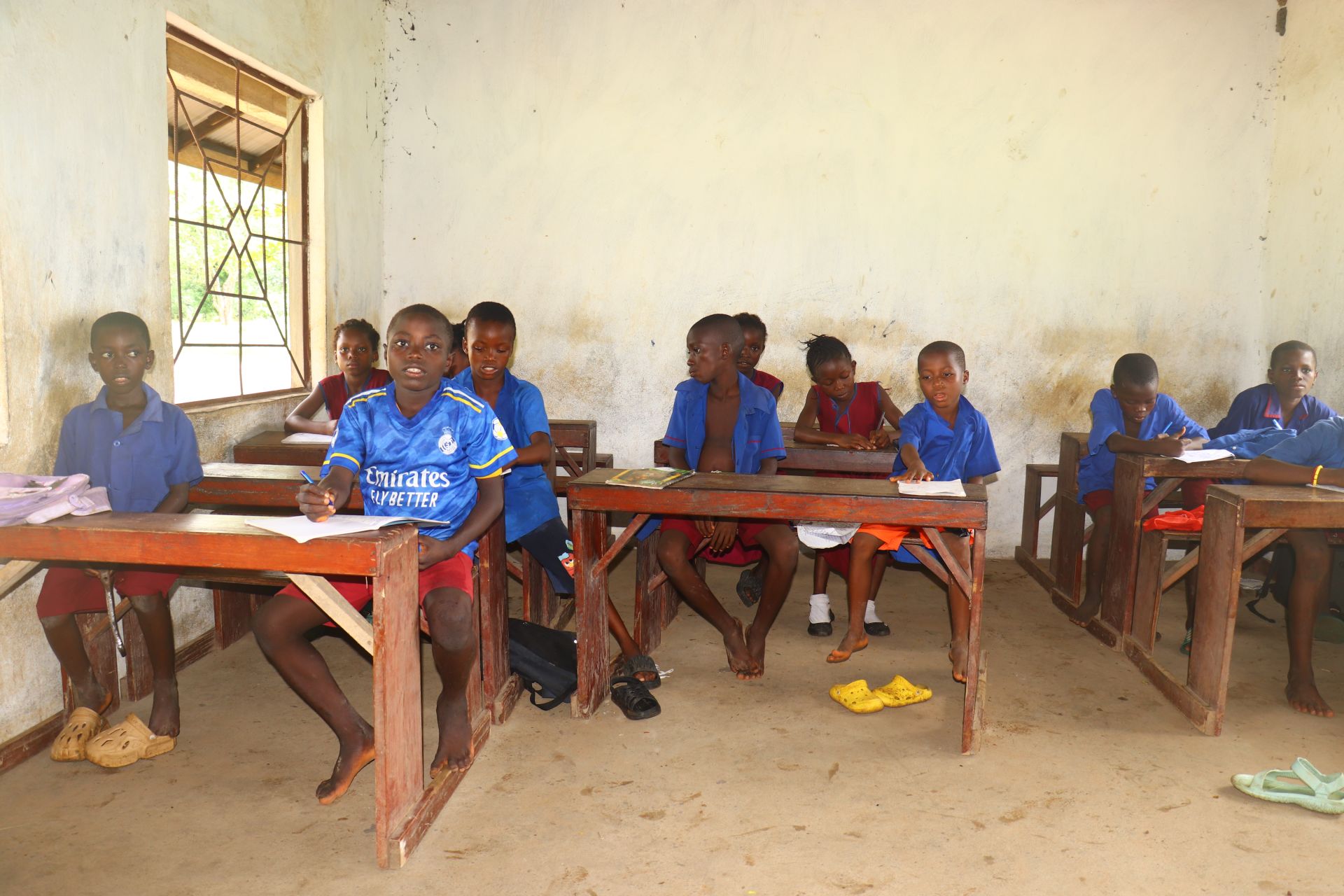
"I would like to be a teacher. With the help of [the] water point in my school, this will help me to have more time at school and study. So, in the end, I will achieve the plan I have in mind," he concluded.
Gbassay’s words echo the hopes of hundreds of children at Daries Salaam COG Primary School. For them, clean water is not just about quenching thirst—it is the foundation for education, health, and a brighter future. Without it, every lesson missed, every day lost to fatigue, and every risk taken on the long walk to the swamp pushes those dreams further away.
But with safe and reliable water at school, the burden would be lifted. Students like Gbassay could remain in class, learn without fear of illness, and focus on building the future they imagine. Water is more than survival here—it is the chance to learn, to thrive, and to transform a community.
Steps Toward a Solution
Schools without reliable, on-premises water access often rely on students to fetch and carry water, leading to rationing and uncertainty about water quality. The water is typically poured into a communal storage tank and used by the entire school. With children carrying water from all different sources, it is also impossible for teachers and staff to know exactly where the water comes from and how safe it is to drink.
A new water point will be located on-premises at the school to ensure accessibility, reliability, and safety for students, teachers, and staff while meeting our school coverage goals. Having water available at the school allows children to drink, wash hands, and use sanitation facilities without leaving school grounds, preventing disruptions to lessons and reducing safety risks. A dedicated source increases water availability, reduces reliance on stored water, minimizes rationing, and ensures confidence in the safety of the water. This means staff and students are healthier, and their lessons aren’t disrupted, contributing to a better education!
Our technical experts worked with the school leadership to identify the most effective solution to their water crisis. They decided to rehabilitate an unsafe, insufficient well to convert it to a borehole well.
Rehabilitating a Well
Abundant water often lies just beneath our feet. Aquifers—natural underground rivers—flow through layers of sediment and rock, offering a constant supply of safe water.
The well marked for this overhaul is dry for several months a year and needs major work to supply adequate, clean water to the school community year-round. A hand auger will be lowered inside the well, powered by a drill team. The team will work to drill several meters deeper to hit a sufficient water column to ensure the well supplies water throughout all seasons. As the team drills, the casing will be installed, transforming the bottom of this well into a borehole. PVC piping will connect this lower system directly to the pump, a component we know will also improve water quality. Finally, we will reconstruct the platform for the well and attach the hand pump.
Once this plan is implemented, everyone within the school will have access to safe drinking water in quality and quantity, even through the dry months.
School Education & Ownership
Hygiene and sanitation training are integral to our water projects. Training is tailored to each school's specific needs and includes key topics such as proper water handling, improved hygiene practices, disease transmission prevention, and care of the new water point.
To ensure a lasting impact, we support forming a student health club composed of elected student representatives and a teacher. These clubs promote hygiene practices schoolwide and keep handwashing stations well-stocked. This student-led model encourages a sense of ownership and responsibility.
Safe water and improved hygiene habits foster a healthier future for everyone in the school and the surrounding community.
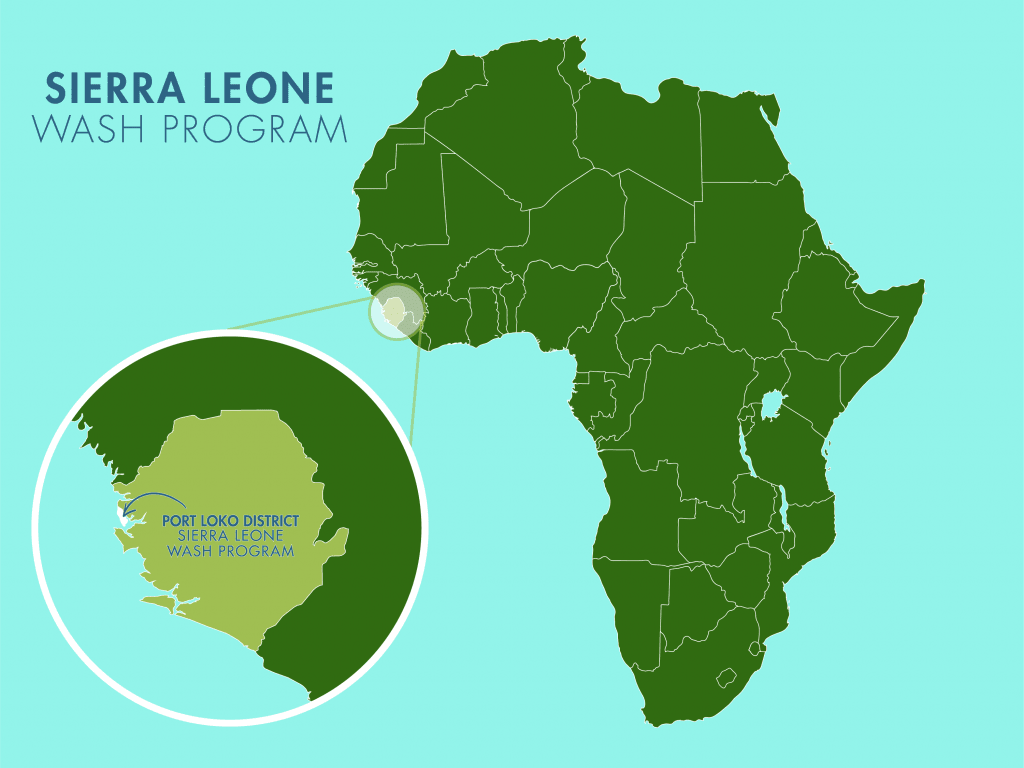
 Borehole Well and Hand Pump
Borehole Well and Hand Pump
 Rehabilitation Project
Rehabilitation Project








